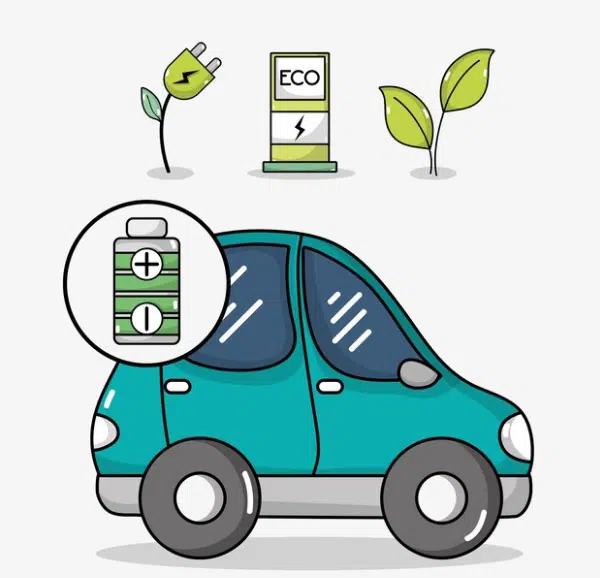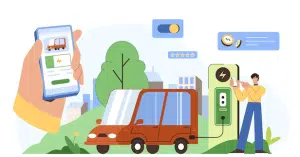In recent years, electric vehicle financing has gained significant attention as the world looks towards more sustainable modes of transportation. The shift towards electric cars is not merely a trend; it represents a fundamental change in how we approach mobility and environmental conservation. In the USA, this transformation is influencing various sectors, particularly automotive lending. The transition to electric vehicles (EVs) is reshaping traditional financing paradigms, as investors, consumers, and financial institutions are increasingly factoring in the sustainability aspect when making decisions.
The financing of electric vehicles isn’t just about securing loans; it’s also about aligning financial strategies with environmental goals. It is about understanding the broader impact of sustainability on economic choices and infrastructure investments. For consumers, this evolution offers both opportunities and challenges. As the country grapples with climate change, electric vehicles have emerged as a pivotal solution to reduce emissions and reliance on fossil fuels. This push for greener options is prompting a reevaluation of the financing mechanisms that underpin the automotive industry.
The evolving landscape of automotive loans
Historically, car loans were straightforward; however, the introduction of electric vehicles has added complexity. Consumers now have to consider new factors, including battery life, charging infrastructure, and resale value. These considerations affect interest rates and the tenor of loans, as financial institutions assess the risk associated with newer technology. As EVs become more prevalent, the criteria for approving loans are adapting to reflect the unique aspects of these vehicles. This shift not only impacts buyers but also affects lenders who are modifying their offerings to remain competitive in an evolving market.
Financial institutions are increasingly looking at the environmental impact and potential government incentives linked with electric vehicles. The federal government, along with various states, offers tax rebates and incentives that can significantly alter the cost structure of an EV purchase, thereby influencing the loan amount and repayment plans. In some cases, these incentives make EV ownership more attractive than traditional cars, a fact that lenders are keen to capitalize on. As a result, banks and credit unions are innovating with tailor-made financial products to meet the needs of the eco-conscious consumer.
The role of government policies
Government policies play a pivotal role in shaping the electric vehicle market and, consequently, its financing. Initiatives such as tax credits, rebates, and infrastructure subsidies are pivotal in making EVs more affordable. These policies not only incentivize buyers but also provide financial institutions with a framework to develop competitive loan products that align with governmental objectives. Given the strategic importance of reducing carbon emissions, these measures are designed to encourage a rapid transition from gasoline-powered to electric cars.
Many states have implemented additional incentives or mandates that encourage electric vehicle adoption. Programs that offer rebates or tax deductions directly influence consumers’ purchasing decisions. They make EVs financially accessible to a wider audience, thereby impacting the demand for related financing products. As states vie to lead the transition to green technology, these policies are crucial drivers of change and innovation in the auto finance sector.
Innovative financing strategies
Financial institutions are pioneering innovative lending approaches to cater to the unique attributes of the electric vehicle market. Lease agreements, for instance, have become more flexible and tailored to accommodate rapid advancements in EV technology. Leasing allows consumers to upgrade to newer models frequently without the burden of ownership, thus mitigating the risk of depreciation. These arrangements are attractive to individuals eager to benefit from the latest innovations while maintaining financial flexibility.
Green loans are another financing product gaining traction. These loans often come with preferential interest rates and terms for customers purchasing electric vehicles. By offering favorable conditions, banks not only attract green-minded consumers but also align their portfolios with sustainability goals. This strategy underscores the growing importance of environmental considerations in financial decision-making and reflects a broader trend of integrating sustainability into the economic fabric.
Challenges and opportunities
The shift towards electric vehicles presents both challenges and opportunities for consumers and financial institutions. One of the main obstacles is the initial cost of EVs, which can be higher than traditional vehicles. While government incentives help offset these costs, the upfront price remains a barrier for many consumers. Financial institutions that can develop innovative solutions to reduce this barrier will likely capture a substantial share of the market.
Battery technology is another area of concern as it directly impacts the cost and viability of electric vehicles. Advancements in battery life and efficiency are crucial for reducing vehicle costs and increasing their appeal. Financial institutions must stay abreast of technological developments to accurately price and structure loans. Furthermore, the variability in battery technology underscores the need for flexible financing solutions that accommodate changing technologies.





